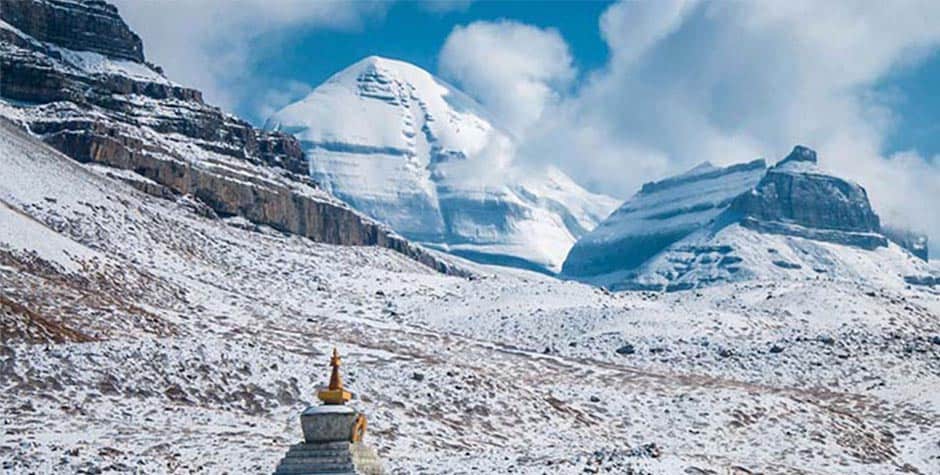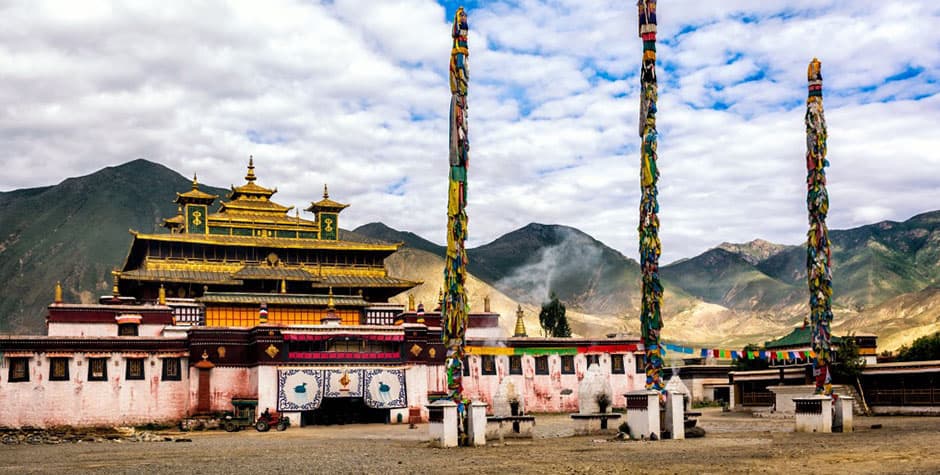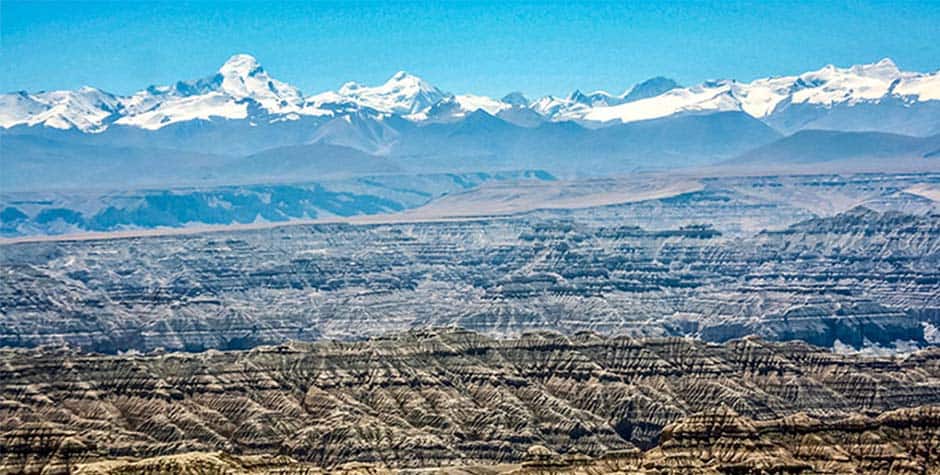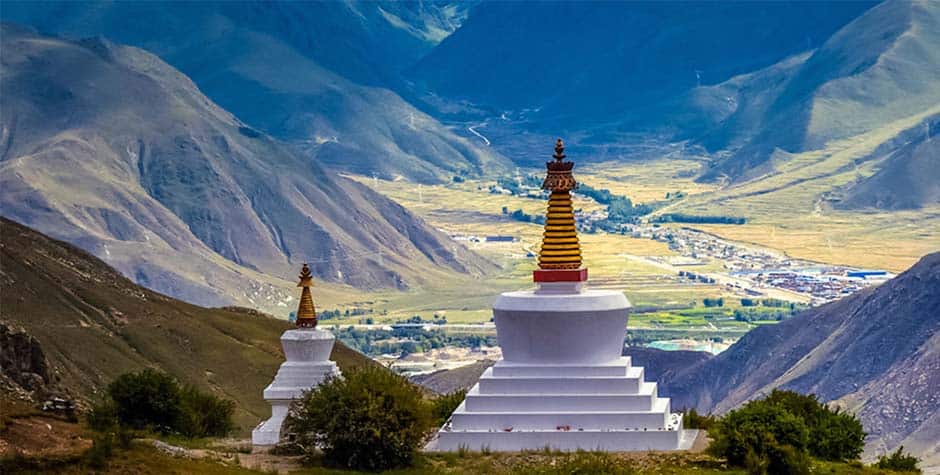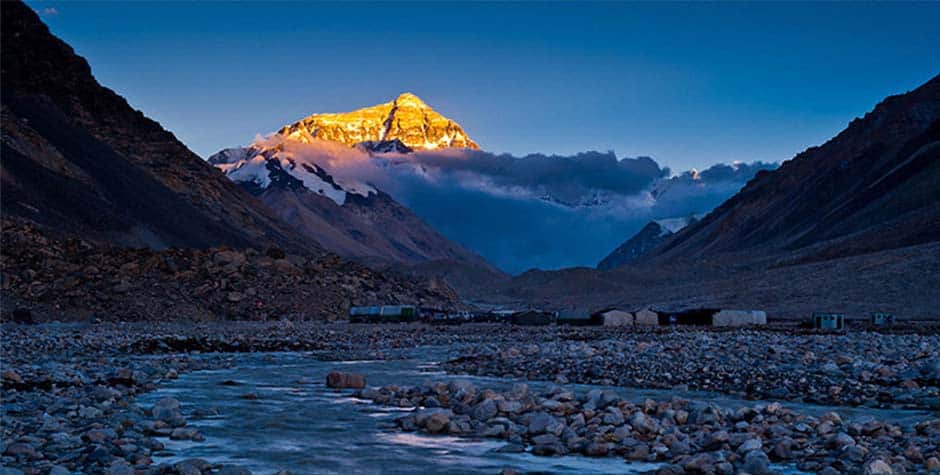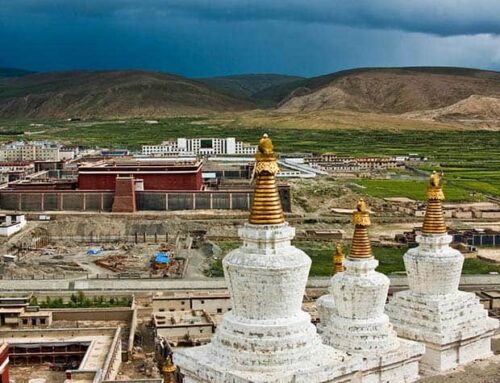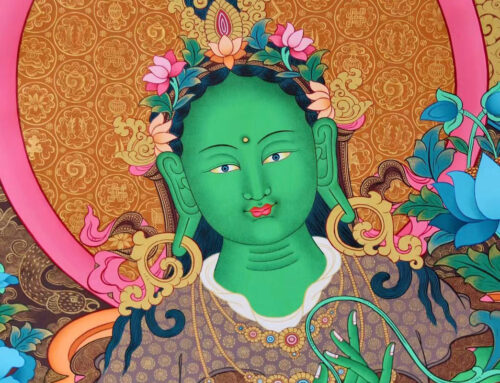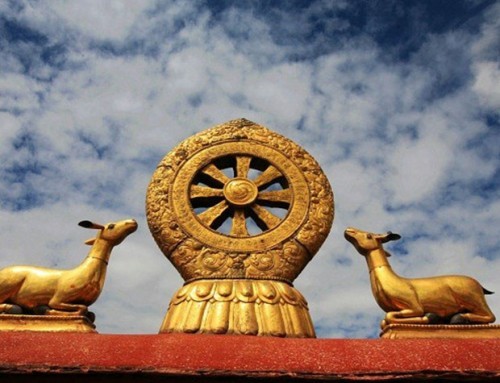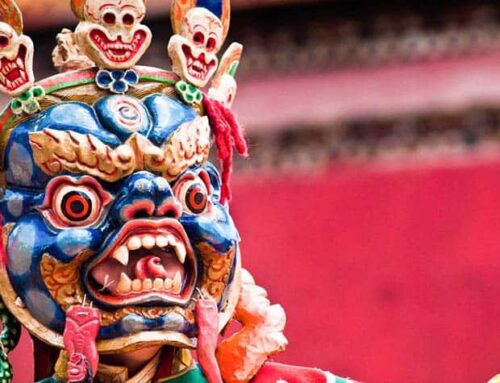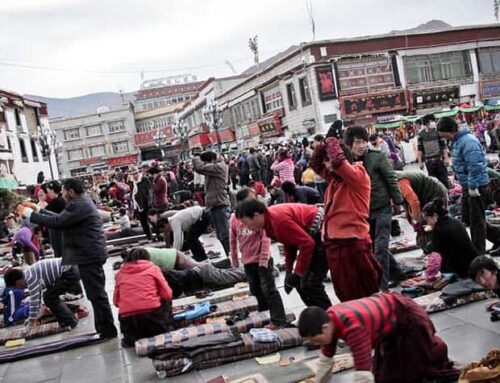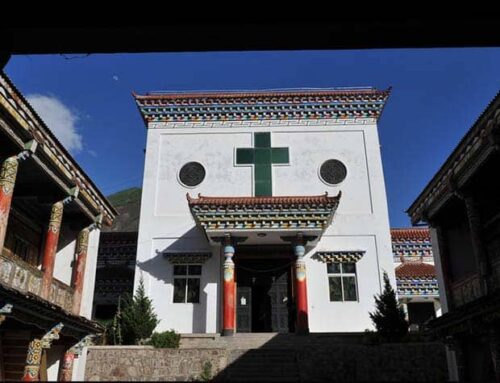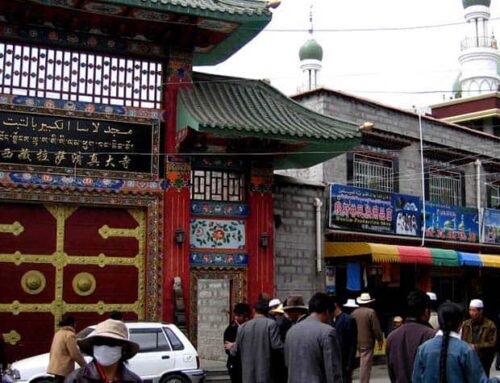The Buddhist wheel of life is one of the most important paintings in Tibetan Buddhism; The initial drawing was designed by Buddha himself. Buddha encourages this painting to be painted outside every Buddhist temple and monastery. For this reason, the painting of the Buddhist wheel of life, which was painted outside all the Buddhist temples and monasteries, was meant to teach the profound Buddhist philosophy of life and perception to more simple-minded farmers or cowherds. So this image is just for communicating the Buddhist philosophy to the general audience.
The Painting of Buddhist wheel of life represent Samsara, The Bhavacakra is popularly referred to as the wheel of life, and may also be glossed as wheel of cyclic existence or wheel of becoming.
Different parts of the Painting on Buddhist Wheel of Life
-
- Images in the center circle represent the three poison: Ignorance, Attachment and Aversion
- The second circle from the center represent Karma.
- The third circle represents the realms of Samsara
- The forth represents twelve links of dependent origination
- The fierce figure holding the wheel is the Mara, the god of death, and he represents impermanence in this figure
- The moon represents liberation from the cycle of existence or Samsara,
- The Buddha pointing to the moon represents his teaching and also represent that he is tell all that liberation is possible
The center layer of the Buddhist Wheel of Life; The three poison
In the center of the wheel are three animals: a pig, a snake, and a bird. These three represent the three poisons of Buddhist philosophy: ignorance, aversion, and attachment, respectively. The pig represents ignorance. This conception is based on the Indian concept of the pig being a dirty animal; it sleeps in the filthiest place, and eats whatever comes to its mouth. A snake represents aversion or anger because its slightest touch will trigger a strike. The bird is for the attachment, the desire to cling. The bird that they use in the painting is an Indian bird that is very attached to its partner. These three animals represent three poisons, a core to our Samsaric existence.
In most of the drawings, the three animals are shown coming out of the mouth of another, which indicates that Aversion leads to ignorance and Ignorance leads to Aversion. Under the influence of these three poison beings, beings create Karma. Shown on the next level.
Second Layer of Buddhist Wheel of Life: Karma
Karma means cause and effect. It is said that if you plant a chili seed, you will only get chili. So, if you harm others, it will have a negative impact on you. In the second level of Karma, the circle is divided into two halves. The upper half is usually painted white or brightly colored. It also shows people moving up to the high realms. The lower half shows people driving down to the miserable stages, and the path is dark.
This indicates that if you do a good deed, you will be happy and start moving upwards to Buddhahood or the next life, the six realms of Samsara. The next circle is the six realms of Samsara.
Third Layer of Buddhist Wheel of Life: The six realms of Samsara.
The third layer of the Buddhist Wheel of Life represents the realms of Samsara. It is divided into six sections for the six realms. Realms are divided into three higher realms and three lower realms. Some paint might have five, as they would combine the god realm with the Demigod realms.
The three higher realms are shown in the top half of the circle.
- God realms (Deva): The god in Buddhism is different from the creator god in Hindu and other nontheistic religions. We believe the creator god doesn’t exist, and the god lives within the Samsaric cycle of existence. The god lives a very long life, they enjoy life in abundance and pleasure. These pleasures and the abundance of life become a distraction, and one never thinks to practice the Dharma. When death comes near, they will know about the time of death, and they will exhaust all their karma ( which brought them to being born in the god realm). And they can see their next life. Being born in the god realm is very hard during the time before dying. Another pain in this realm is that when you are young and healthy, you will have lots of friends and family, but during old age, your body will start rotting before your death, and no one will come near you for the smell. It is said that God dies in a lonely and miserable death. So we say God suffers from a long life.
- Demi-god realm (Asura): The Demi-gods have all the gods’ abundance and pleasures. They always keep fighting within themselves and even make war with god. During their battle with god, they would lose every time, and they suffered constant fighting, jealousy, and being killed or wounded in the wars. So we say the Demi god suffers from the flight and wars
- Human realm (Manuṣya): Human suffering starts from birth to the end of death. We suffer from hunger, thirst, cold, separation from friends, being attacked by enemies, and not getting what we please. Our suffering is broadly categorized into Birth, old age, sickness, and death. Yet the human realm is most suitable for practicing the Buddha-dharma, as we are not completely distracted by pleasure, pain, and suffering, and we are more capable than beings in the animal realms.
The three lower realms, as shown in the lower part of the circle:
- Animal realm (Tiryagyoni): Domesticated animals suffer from being exploited by human-like beings, killed for food, and overworked. Wild animals suffer from being attacked and eaten by other animals. They live in constant fear and exploitation.
- Hungry ghost realm (Preta): They are rich yet suffer extreme hunger and thirst. They have a big tummy and a skinny neck, not even enough to swallow a single drop of water. They can see the water, but cannot drink. Sometimes, they can manage to eat or drink some, but it would only burn their neck and belly as it goes down. We often tell our friends if you are being so miser, you will be born into the realm of hunger god.
- Hell realm (Naraka): In hell, beings suffer immeasurable suffering for eons of time. There are eighteen different types of hell, each inflicting a different kind of torment. In hot hell, beings suffer from unbearable heat and continual torments of various kinds. In the cold hell, beings suffer from unbearable cold and other torments.
The human realm is considered the best for practicing Dharma among the six realms. In each realm, a Buddha is trying to help sentient beings find their way to nirvana.
Outer ring of Buddhist Wheel of Life: twelve links of dependent origination
The twelve links of dependent origination describe Dukkha’s Samsaric rebirth and arising. It shows that when certain conditions are present, they give rise to subsequent conditions, which in turn give rise to other conditions; these conditions result in the cyclical nature of rebirths and deaths in Samsara. By contemplating the twelve links, one gains greater insight into the workings of karma; this insight enables us to unravel our habitual way of thinking and reacting.
Twelve dependent originations are;
- Ignorance, lack of knowledge – a blind person, often walking, or a person peering out
- Conditioning refers to conditioned phenomena generally, but specifically to all mental “dispositions”. These are called ‘volitional formations’ both because they are formed as a result of volition and because they are causes for the arising of future volitional actions – a potter shaping a vessel or vessels
- Consciousness – a man or a monkey grasping a fruit
- Name and Forms (constituent elements of mental and physical existence) – two men afloat in a boat
- Six senses (eye, ear, nose, tongue, body, and mind) – a dwelling with six windows
- contact – lovers consorting, kissing, or entwined
- pain – an arrow to the eye
- Thirst – a drinker receiving a drink
- Grasping – a man or a monkey picking fruit
- Coming to be – a couple engaged in intercourse, a standing, leaping, or reflective person
- being born – a woman giving birth
- old age and death – corpse being carried
The figure holding the Buddhist Wheel of Life: impermanence
The fierce figure holding the wheel is the Mara, the god of death, and he represents impermanence in this figure.
The moon: liberation
The moon in the painting represents liberation from the cycle of existence or Samsara.
The Buddha pointing to the moon: the path to liberation
The Buddha, pointing to the moon, represents his teaching and also shows that he is telling everyone that liberation is possible. According to a Buddhist text, the Buddha once said, “I have shown you the path that leads to liberation.
But you should know that liberation depends upon yourself.”
We hope this post helps explain the understanding of one of Tibet’s most important wall paintings. You will see this painting in every temple and monastery in Tibet during your travel in Tibet.
Here are some links to the Buddhist wheel of life in PDF

Tenzin Travel is the best Tibetan Travel agency in Tibet. Our agency is one of Tibet’s most experienced tour operators, with over 20 years in the industry. Founded by a local Tibetan family with decades of expertise as guides, managers, and route planners, we craft personalized itineraries for every traveler. We are the highest-rated and most recommended Tibet travel agency on TripAdvisor, Google, and LonelyPlanet.
We can make holistic arrangements for your trip to Tibet, including a Tibet Travel Permit, a Tibetan tour guide, flight tickets, train tickets, vehicle arrangements, and hotel bookings in Tibet.
Our Lhasa office is just steps from Barkhor Square, and our all-Tibetan team ensures deep cultural, linguistic, and religious insights, setting us apart from other agencies.
Beyond tourism, we support Tibetan communities by donating a portion of each tour to local projects. Your travel to Tibet is about more than profit—it’s about the opportunity for us to give back.


